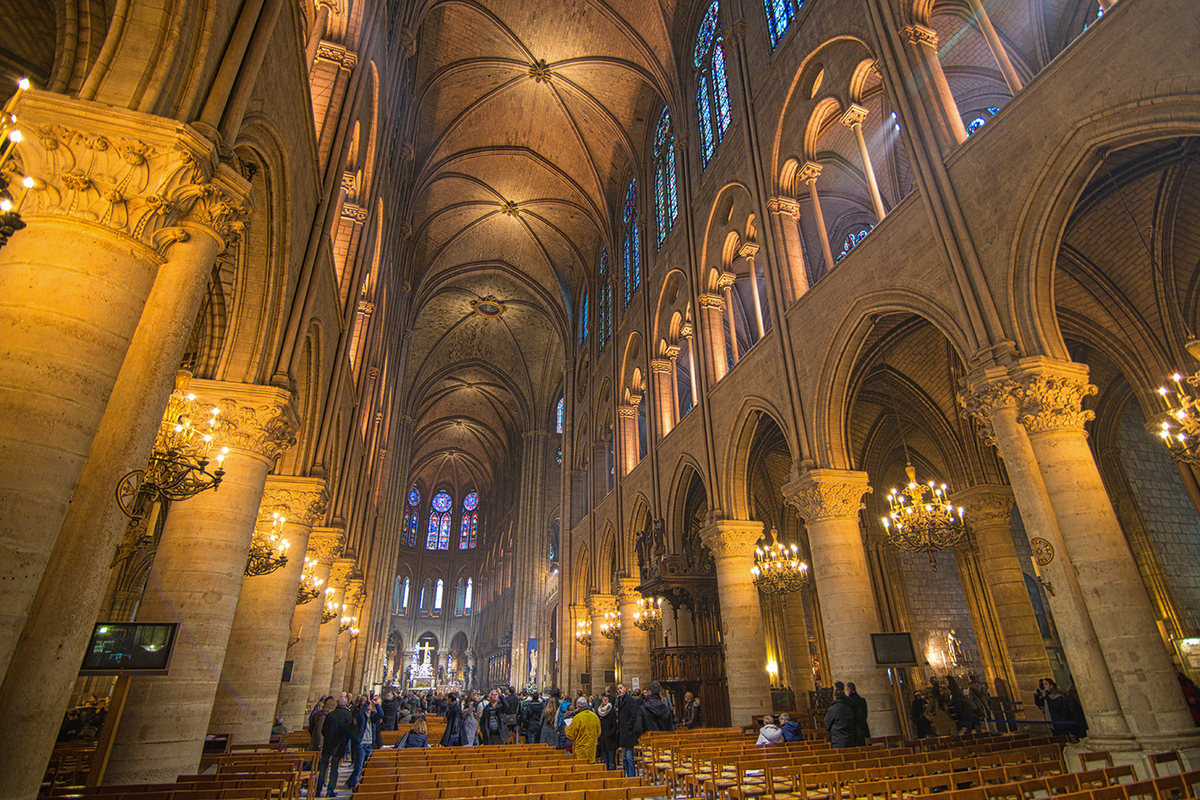“Miracle”: Treasures rescued from Notre Dame Cathedral put on public display
[ad_1]

Five years after the Notre Dame Cathedral fire in Paris, a new exhibition showcases salvaged art treasures. When the flames that engulfed Notre Dame Cathedral shot into the evening sky on April 15, 2019, there was a moment when all seemed lost. But firefighters prevented the fire from reaching the bell towers, the collapse of which would almost certainly have led to the collapse of the facade and the destruction of the bells, Great Organ and stained glass rose windows of the Parisian monument.
Dozens of treasures also survived, including works of art, ancient books and relics, which were rescued under extreme conditions when a team of firefighters, police and city council workers was assembled to retrieve them.
A unique collection of 17th-century religious paintings, damp but largely intact, was removed from the cathedral weeks after fire, smoke and water damage was assessed, The Observer reports. The 13 works – part of a series of 76 large oil works painted by France’s finest artists between 1630 and 1707 – hung in dimly lit side aisles of the cathedral, often overlooked by visitors.
They will now be put on public display following restoration by experts from Mobilier National, the cultural institution responsible for preserving historical sites in France, before being returned to Notre Dame Cathedral ahead of its planned re-opening in December.
Emmanuel Penicre, director of collections at Mobilier National, says: “We were lucky that they were recovered quite quickly, with only minor damage from water and dust. It was simply a miracle. We started removing them the day after the fire and decided that they would all be restored. The exhibition is an opportunity to see them all in one place, in the order in which they were painted, that is, the way they were originally exhibited. Now you can see what they would have looked like the day they were finished.”
The May Paintings got their name from the decision of the Parisian Guild of Jewelers (Confrérie des Orfèvres) to hold an annual drawing competition, which must be completed by May, when they will be presented to the Blessed Virgin, whose statue stands at the entrance to the cathedral. The move was meant to symbolize the supremacy of the Catholic faith in the wake of France’s Wars of Religion, a series of eight civil conflicts between Catholics and Huguenot Protestants from 1562 to 1598 that cost up to four million lives, The Observer explains.
The theme was to be from the Acts of the Apostles, and the paintings were intended to be the same 10 feet 6 inches high and 8 feet 6 inches wide, although some made them larger. Artists including Charles Le Brun and Jacques Blanchard drew inspiration from antiquity, Greek and Roman themes. Every year after the presentation of the May Painting, it was exhibited and hung on one of the stone columns flanking the nave of Notre Dame Cathedral.
During the French Revolution, the paintings, like many religious works, were dispersed. Some of them were returned to the cathedral in 1802 and remained there until 1862, when the architect Eugene Viollet-le-Duc, who added the spire to Notre Dame, considered them incompatible with his new architectural plans and they were placed in the Louvre.
“The paintings survived two major disasters: the revolution and the arrival of Viollet-le-Duc, who got rid of most of the medieval decorations of Notre-Dame Cathedral,” says Penicot. “In 1905 they were returned to their place, but not along the columns of the nave, as before, but in the side aisles, which led to the loss of the unity of the collection.”
According to Penicot, the new exhibition is the first time in more than 160 years that the works have been displayed in the same place: “These are truly great classical paintings, painted by the best artists of the time. They have not only great religious significance, but also artistic value. Of the 76 paintings, we know the whereabouts of 52, seven of which are in private collections in Great Britain, the rest in churches in France.”
The exhibition features nine more religious paintings salvaged from the fire and part of Notre Dame’s rare 27-meter-long altar carpet, commissioned by King Charles X of France, which was stored in a box at the time of the fire and suffered only minor water damage. The carpet was used only a few times at major events, including the wedding of Napoleon III, France’s first president and its last emperor, who died in exile in England in 1873.
Visitors will also be able to see 14 large tapestries woven in the 17th century for the altar of Notre Dame Cathedral, now owned by Strasbourg Cathedral, which depict scenes from the life of the Virgin Mary, as well as contemporary artwork and furniture, including 1,500 oak chairs for the congregation. which will be installed in the cathedral.
Hours after the fire in 2019, French President Emmanuel Macron promised to rebuild the cathedral within five years. A Te Deum service of thanksgiving will be held on Monday, the fifth anniversary of the fire, and Notre Dame will reopen on December 8. The treasures of Notre Dame Cathedral will be on display at the National Museum of Mobile from April 24 to July 21.
[ad_2]
Source link






